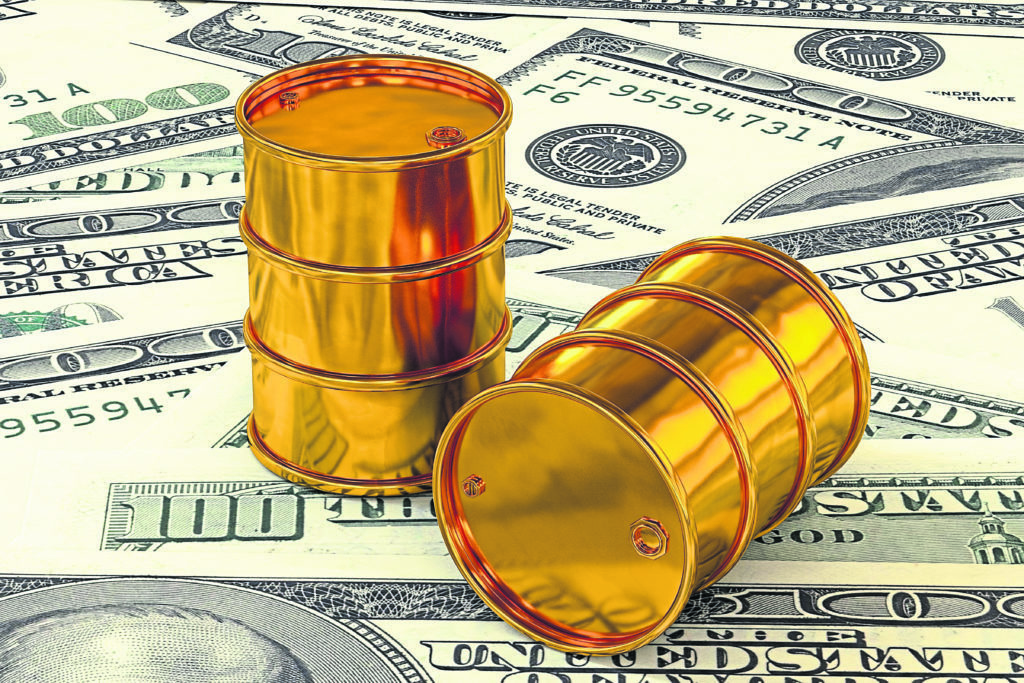
Oil’s taking a breather after bursting into a bull market on growing optimism over OPEC cuts, U.S.-China trade talks and the Federal Reserve’s interest rate policy.
Futures in New York fell as much as 1.6 percent after completing a 23 percent rebound since hitting an 18-month low on Christmas Eve. Saudi Energy Minister Khalid Al-Falih expressed confidence production curbs by the OPEC+ coalition will balance the market. Prices were also supported as the U.S. and China appeared to make progress toward a trade accord and Fed minutes signaled a cautious approach by policy makers to further rate hikes.
Crude is recovering from a slump of almost 40 percent in the final three months of 2018. Investors are more confident the Organization of Petroleum Exporting Countries and its allies will deliver on their pledge to cut 1.2 million barrels of output starting this month. As producers say they won’t let oil stockpiles exceed normal levels, fears of a slowdown in demand is abating as trade tensions ease between the world’s top-two economies.
“Prices are coming off a bit with some investors feeling the gains may be excessive, but the bullishness especially from progress on trade negotiations will drive the market higher,” Sungchil Will Yun, a commodities analyst at HI Investment & Futures Corp., said by phone. “Coupled with OPEC+’s output curb efforts, prices are likely headed for the $55 mark.”
West Texas Intermediate for February delivery lost as much as 86 cents to $51.50 a barrel on the New York Mercantile Exchange, and traded at $51.74 at 3:48 p.m. in Singapore. Prices surged 5.2 percent on Wednesday, capping a 17 percent climb in eight sessions to undo more than half of 2018’s full-year loss.
OPEC+ Curbs
Brent for March settlement fell 67 cents to $60.77 a barrel on the ICE Futures Europe Exchange in London. It’s also jumped more than 20 percent since Dec. 24. The global benchmark crude traded at a premium of $8.70 a barrel to WTI for the same month.
The OPEC+ group’s pledged output curbs of 1.2 million barrels a day — spanning six months from January — are more than sufficient to balance the market, Saudi Arabia’s Al-Falih said in Riyadh. The kingdom has already cut its production to 10.2 million barrels a day and expects to export 7.2 million this month and 7.1 million in February, he said on Wednesday.
“We have to remain vigilant and agile and respond, so I would not rule out calling for further action of some kind,” Al-Falih said, adding that the reductions by OPEC and its allies aren’t targeting any specific oil price.
Meanwhile, the U.S. and China wrapped up three days of mid-level trade talks on Wednesday, boosting the S&P 500 Index for a fourth day to the highest in almost a month. Negotiations were “extensive, in-depth and detailed,” and laid the foundation for the resolution of issues of mutual concern, China’s Ministry of Commerce said in a statement Thursday. The U.S. said it wants any deal to include “ongoing verification and effective enforcement.”
Also on Wednesday, minutes of the Fed’s December meeting showed policy makers were attentive to recent financial-market volatility and risks to the outlook. Growing investor optimism helped overshadow a government report showing a steep inventory jump for U.S. gasoline and diesel, a bearish signal for future crude demand.
Other oil-market news: U.S. crude inventories fell 1.68 million barrels last week, declining the most since the week ended Nov. 30, according to Energy Information Administration data released Wednesday. The Bloomberg Dollar Spot Index dropped to the lowest level in more than three months on Wednesday, increasing the appeal of commodities denominated in the U.S. currency. Alberta’s government maintained its mandated oil curtailment in February at the same level as January even as Canadian heavy oil prices surged.
Recommended for you
